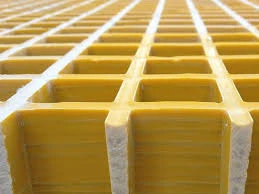loading...
- No. 9, Xingyuan South Street, Dongwaihuan Road, Zaoqiang County, Hengshui, Hebei, China
- admin@zjcomposites.com
- +86 15097380338
- Welcome to visit our website!
Advantages and Applications of Fiberglass Grating in Various Industries
The Advantages and Applications of Fiberglass Grating
Fiberglass grating, a composite material made from woven fiberglass and resin, is gaining popularity across various industries due to its remarkable properties and versatility. This innovative material offers a lightweight yet robust alternative to traditional metal grating, making it an ideal choice for many applications. In this article, we will explore the advantages of fiberglass grating and its diverse uses.
Strength and Durability
One of the most significant advantages of fiberglass grating is its exceptional strength-to-weight ratio. Fiberglass is known for its durability and resistance to harsh environmental conditions, including corrosion, chemicals, and UV radiation. Unlike metal grating, which can rust and deteriorate over time, fiberglass maintains its integrity even in challenging environments. This makes it particularly beneficial in industries such as chemical processing, wastewater treatment, and marine applications.
Safety Features
Safety is paramount in industrial settings, and fiberglass grating excels in this regard. The non-slip surface of fiberglass grating reduces the risk of slips and falls, making it ideal for walkways, platforms, and staircases. Furthermore, its electrical insulating properties provide an added layer of safety in environments where electrical hazards may exist, ensuring protection for workers in various sectors.
Lightweight and Easy to Install
Fiberglass grating is significantly lighter than traditional materials like steel or aluminum. This lightweight nature not only simplifies the installation process but also reduces labor costs and time. Fiberglass panels can be easily transported and maneuvered, making them a practical choice for projects that require swift completion. Additionally, the ease of cutting and shaping fiberglass grating allows for customization to suit specific project requirements.
Versatility in Design
fiberglass grating

Fiberglass grating is available in a variety of styles, sizes, and colors, offering flexibility in design that can meet aesthetic and functional needs. It can be molded into different shapes, allowing it to be used in various applications, from walkways and platforms to trench covers and industrial flooring. The ability to customize fiberglass grating also means that it can be tailored to fit specific environments and conditions, enhancing its usability.
Environmental Considerations
In today’s environmentally conscious world, the sustainability of materials is more important than ever. Fiberglass grating is a recyclable material, which aligns well with green building practices. Additionally, its long lifespan means fewer replacements are needed, reducing waste. Using fiberglass grating can contribute to LEED (Leadership in Energy and Environmental Design) certification, which is increasingly sought after in construction and renovation projects.
Cost-Effectiveness
While the initial investment in fiberglass grating may be higher than that of some traditional materials, its long-term benefits often outweigh the costs. Its durability means lower maintenance and replacement costs over time. Industries that utilize fiberglass grating often find that the reduced downtime due to maintenance leads to increased productivity, further justifying the initial expenditure.
Common Applications
Fiberglass grating is used in a wide range of industries, including pharmaceuticals, food processing, oil and gas, and recreational facilities. Its chemical resistance makes it perfect for chemical plants, while its lightweight nature and non-conductive properties make it valuable in electrical utility environments. Additionally, parks and resorts have adopted fiberglass grating for walkways and deck surfaces due to its aesthetic appeal and functionality.
In conclusion, fiberglass grating stands out as a superior alternative to traditional grating materials. Its strength, safety features, lightweight design, versatility, environmental benefits, and cost-effectiveness make it an ideal choice for a variety of applications. As industries continue to evolve and seek innovative solutions, fiberglass grating is sure to play a significant role in shaping the future of construction and infrastructure. Whether for industrial needs or aesthetic environments, fiberglass grating offers a solution that meets modern demands while enhancing safety and efficiency.
-
GRP Structures: The Future of Lightweight, High-Performance EngineeringNewsJun.20,2025
-
FRP Water Tank: High-Performance Storage for Corrosive and Clean Water SystemsNewsJun.20,2025
-
FRP Square Tube: The New Industry Standard for Chemical and Structural ApplicationsNewsJun.20,2025
-
FRP Pultruded Profiles: The Ultimate Choice for Lightweight Structural StrengthNewsJun.20,2025
-
FRP Handrails: The Safer, Smarter, and Stronger Choice for Modern InfrastructureNewsJun.20,2025
-
FRP Grating: The Smart Solution for Durable, Lightweight Industrial FlooringNewsJun.20,2025
-
Why Choose a Galvanized Water Tank for Your Storage NeedsNewsMay.21,2025
